
Related
Many in India were disappointed that President Obama made no public mention of a central figure in the 2008 attacks on Mumbai: a Pakistani American man named David Coleman Headley who was also a former informant for the U.S. Drug Enforcement Administration. Indian authorities have raised questions about why the United States overlooked repeated warnings about Headley’s terrorist activities and point to his connections to both American law enforcement as well as Pakistani intelligence officials. [includes rush transcript]
Transcript
ANJALI KAMAT: President Obama began his visit to India in Mumbai Saturday, where he commemorated the 166 people who were killed during the November 2008 terrorist attacks in the city. Speaking at the Taj Mahal Hotel, which was one of the sites under attack two years ago, Obama emphasized that the United States and India were deepening their intelligence and counterterrorism cooperation.
PRESIDENT BARACK OBAMA: Our governments have worked closer than ever sharing intelligence, preventing more attacks, and demanding that the perpetrators be brought to justice. Indeed today, the United States and India are working together more closely than ever to keep our people safe, and I look forward to deepening our counterterrorism cooperation even further when I meet with the Prime Minister Singh.
ANJALI KAMAT: But many in India were disappointed that the President made no public mention of a central figure in the 2008 attacks on Mumbai: a Pakistani American man named David Coleman Headley, who was also a former informant for the U.S. Drug Enforcement Administration.
AMY GOODMAN: An ongoing federal review of the U.S. government’s contacts with David Headley shows that American agencies had been given at least five increasingly specific warnings about Headley’s ties to the extremist group Lashkar-e-Taiba since 2001. He was not arrested until October 2009, nearly a year after the Mumbai attacks.
Indian authorities have raised questions about why the United States overlooked the repeated warnings about Headley’s terrorist activities and point to his connections to both American law enforcement as well as Pakistani intelligence officials. David Headley was still a DEA informant when he began training with Lashkar in 2002, and it remains unclear when he stopped working for American federal agencies.
For more, we go to Washington, D.C., to ProPublica senior reporter Sebastian Rotella, whose reporting on the story over the last few weeks prompted a review of the Headley case by the Director of National Intelligence.
Welcome to Democracy Now! What should we understand about David Headley, Sebastian?
SEBASTIAN ROTELLA: Thank you. Good morning.
Well, we should understand he’s one of the most interesting, mysterious and dangerous figures to emerge in a terrorism case — certainly, Americans — in a long time and that there’s this continuing review that is looking at a series of mysteries surrounding him. And as you described, these are warnings over a seven-year period in which he trained and then did terrorist reconnaissance for Lashkar-e-Taiba, culminating in the Mumbai attacks. The warnings, five of them made specific reference to the fact that he was training or involved in plotting or linked to terrorist violence, yet there wasn’t action taken against him.
And there’s a couple of issues that are being looked at. One is the question of information sharing and tracking of threats, where it appears that the warnings from his wives, from associates of his family, were looked at in isolation, that the investigators who looked at them at different points in time didn’t have all the previous information on him. There’s also the question of, if they had some of the previous information, was there a failure of analysis? Did they not take the threat seriously enough? Did they not take the Lashkar-e-Taiba group, which was a close ally of al-Qaeda and an anti-Western, anti-American, anti-Semitic group, seriously enough?
And then, of course, there’s this issue of, as you said, the fact that he goes into these training camps in Pakistan, and he’s still working as an informant, at least for the DEA. What was the extent and the nature of that relationship? Did he work for other agencies or collect intelligence for others? And did that have an impact on these investigations? Basically, he roamed free doing terrorist reconnaissance around the world for years before he was arrested.
ANJALI KAMAT: Do we know for how long he worked as an agent for the DEA? When did he stop working for the DEA?
SEBASTIAN ROTELLA: That’s one of the fundamental questions in the case that has yet to be answered. Different people say different things. Most people say that they do not feel that he was an informant when the Mumbai attacks happened, that he had been closed or deactivated before that. But some say it was between 2003 and 2005. Others are less clear.
The question is — it appears clear that he was training and an informant at the same time — did his work as an informant carry over into the period when he was scouting and preparing this attack? He plays a central role in the attack, using his American passport to scout these targets in Mumbai. And again, did his role evolve? Did it move from working drugs to working intelligence. He had a profile which was very useful to American agencies at a time when there was a dire need for intelligence gathering in Pakistan. And what was the communication between the agencies that were involved with him in different ways or getting these warnings or working with him as an informant?
ANJALI KAMAT: And part of what’s been contentious on this trip is the fact that Indian authorities — when were Indian authorities warned about David Headley? He wasn’t arrested ’til a year after the Mumbai attacks.
SEBASTIAN ROTELLA: That’s right. They weren’t warned about him, and they weren’t told about him, until he was arrested in October 2009. But there were warnings in the course of 2008, as he was doing these scouting trips in Mumbai. There were a series of increasingly specific and urgent warnings from the FBI and the CIA to Indian intelligence about a plot by Lashkar-e-Taiba to attack Mumbai. As the year went on, there was talk of specific targets like the Taj and other targets in the neighborhood, where Americans and Westerners and foreigners went. And one of the things that people in the American and Indian counterterrorism community say privately is that they wonder if there is some connection between Headley’s movements and those warnings, if there was some monitoring of him or some knowledge of him, not necessarily that he was as involved directly and centrally as he was, but that somehow played a role in these warnings.
But then that leaves another mystery, which is, after Mumbai, he probably starts a new plot, first for Lashkar, and then continuing with al-Qaeda, where he scouts the Danish newspaper in Denmark that had published the caricatures of the Prophet Muhammad. And he does similar reconnaissance there. He even talks his way into the newspaper. So, the question is, what was known about him? And he — obviously he was allowed or he ended up dong that, so that’s another mystery. Why did it take so long to track him down? The official story is that American enforcement agencies didn’t learn about his activities until July 2009, when British intelligence detected his contact with al-Qaeda operatives in Britain related to that plot against the newspaper in Denmark.
AMY GOODMAN: We have ten seconds, but the issue of extradition, Sebastian?
SEBASTIAN ROTELLA: I don’t think an extradition of David Headley is going to happen. That’s part of his plea agreement. He is facing life in prison in the United States. The question is more, will his cooperation be helpful in prosecuting all the people who remain to be arrested, the masterminds of the Mumbai attacks, most of whom are still free and some of whom allegedly include people in Pakistani intelligence?
AMY GOODMAN: Sebastian Rotella, senior reporter for the investigative news website ProPublica, thank you very much for joining us.

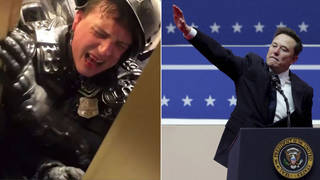
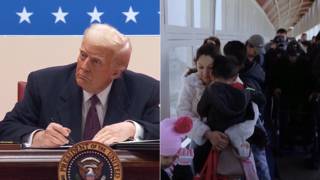
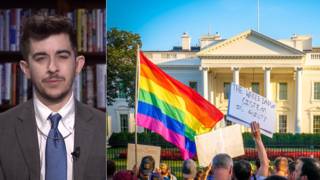
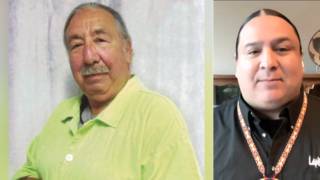
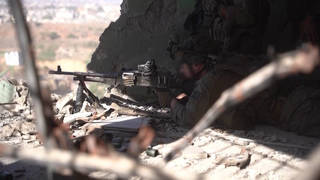





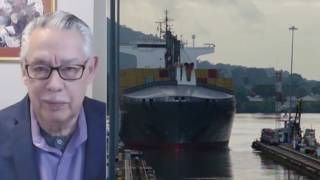

Media Options